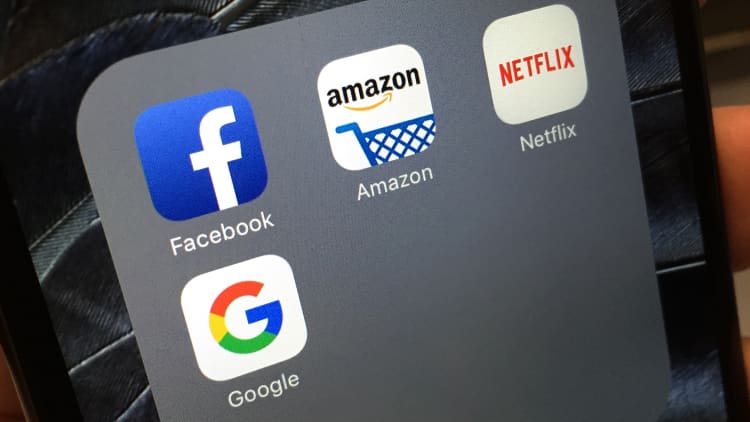
You know what we need? A FANG product.
And we are going to get one on Wednesday, when the Intercontinental Exchange, the parent of the New York Stock Exchange, introduces NYSE FANG-plus index futures under the symbol NYFANG.
There's a few twists here. First, it's a quarterly futures contract, and second, it's broader than the just the FANG stocks. And OK, maybe it would have been more topical if we got this a year ago, but better late than never.
It will consist of the quarterly futures contracts of Facebook, Apple, Amazon, Netflix and Google's Alphabet plus another five actively-traded technology growth stocks: Alibaba, Baidu, Nvidia, Tesla and Twitter.
It is also equally-weighted: each stock contributes 10 percent, regardless of market capitalization. It will have at least 10 stocks, but could contain more.
FANG are still hot stocks, despite their run-up this year. The exchanges and the whole trading community are grappling with low volume and low volatility, and they are desperately seeking ways to get products that people want to trade into the marketplace.
ICE was obviously listening: "Given their size, performance and innovation, the FANG stocks are among the most widely traded stocks and we're pleased to offer a capital efficient means of accessing and hedging these growth stocks in a cost-effective way," Trabue Bland, president of ICE Futures U.S., said in a press release.
But Vanguard founder Jack Bogle appeared on CNBC on Tuesday and, not surprisingly, said he was skeptical. "Wall Street is looking for new vehicles to get investors to trade, but traders trading is a loser's game."
The man who popularized index investing added, "Anything that gets investors into trading is a negative, because trading costs detract from the return on the markets. This is the classic mathematics of indexing. If you buy the market at 5 basis points, 4 basis points, and don't trade, you'll get 99.96 points out of the market. And that's got to be a winning strategy."
He may be right, but don't underestimate the power of a new idea. Certain niche ETFs took off when the investing public suddenly decided it needed the product. Look at the Wisdom Tree Japan Hedged Equity (DXJ), which took off when everyone wanted exposure to Japan without the currency risk.
I know for sure the ETF community is involved in this discussion, trying to figure out how they can get ETFs with smaller groups of stocks in hot sectors out there faster than current SEC rules allow. Right now it's very difficult to get an ETF that consists of only a few stocks.
One thing's for sure. If it's successful, you can expect other products like this in the future.
ICE has even thought about what happens if FANG stocks fade in a year. They can review the composition of the fund every quarter with the objective to represent "a segment of the technology and consumer discretionary sectors consisting of the most highly-traded and high-growth technology and internet/media stocks."
Bottom line: This sounds like it could evolve into an all-purpose technology momentum fund.


